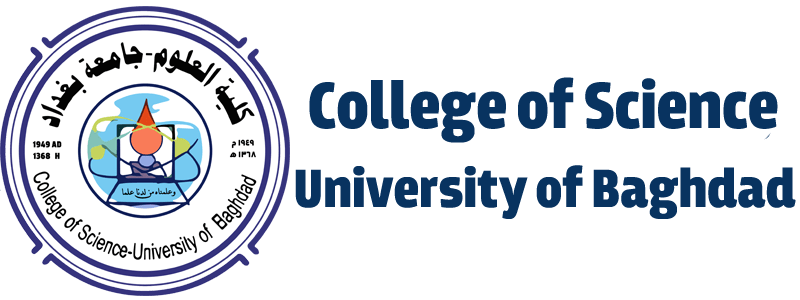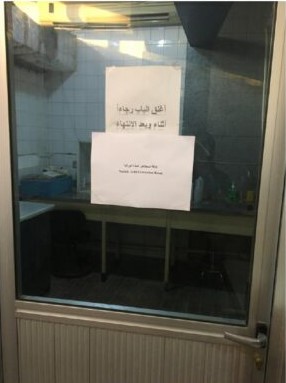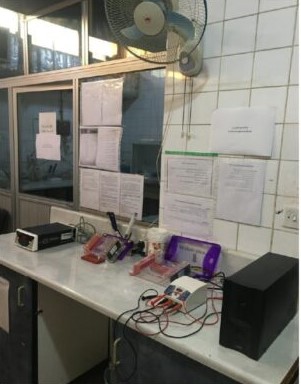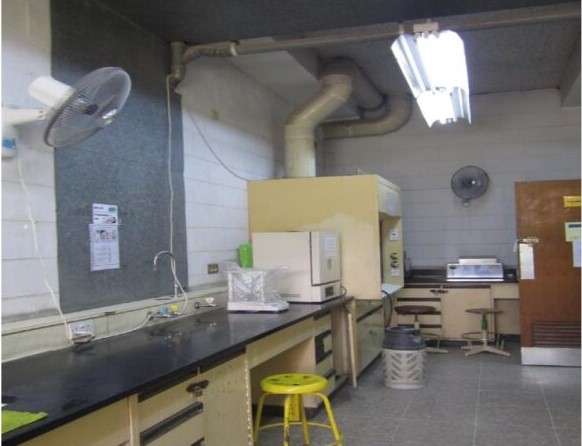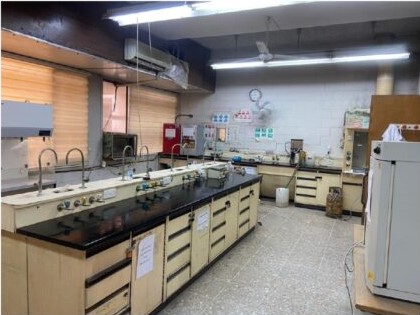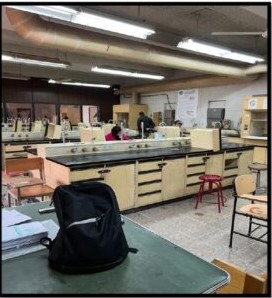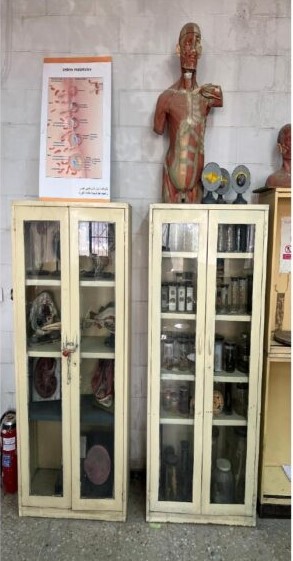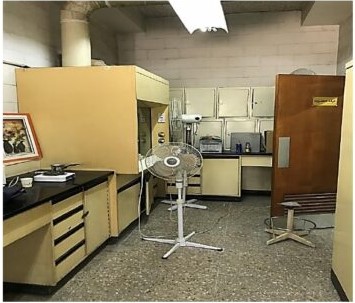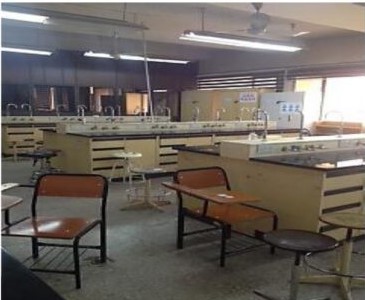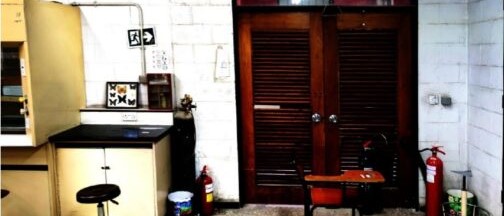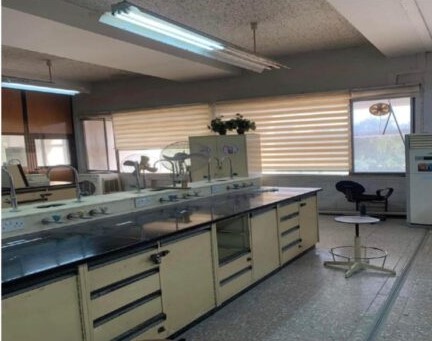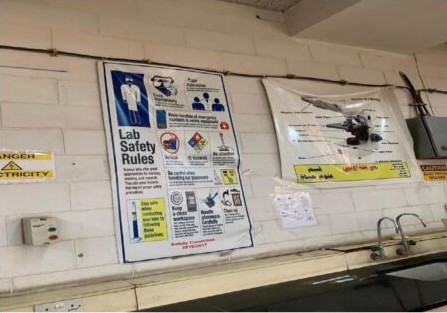Laboratory of Molecular Biology for graduate students /PCR lab
This laboratory is one of the important laboratories for graduate students in the Department of Biology, where it is possible to work in
To:
. 1-diagnosis and study of living organisms depending on their genetic material
2-keeping abreast of the rapid developments in the field of Molecular Biology, which enables graduate students to train
On modern methods that fall within this specialization or field
3-preparing specialists in Molecular Biology Laboratory journals with a high scientific qualification (Master
PhD) and scientific and practical experience that helps in solving problems and providing scientific and diagnostic guidance
4-contributing to the development of scientific research in Iraq by conducting scientific research and trying to apply it in
The Iraqi society as it concludes
Microbiology laboratory
The laboratory consists of three rooms, two of which are special for the preparation of forms
Laboratory, storage of materials, media, sterilization, main room for work and conducting experiments
Advanced microbiology laboratory for postgraduate studies
The selected work includes the work requested by the Higher courses (Master and doctorate) specialization
Microbiology, where Microbiology is diagnosed in various circles
Transplantation and biochemical tests in addition to immunological tests with the Eliza device
Environment and Pollution Laboratory
The evidence laboratory is included in the first semester materials and the pollution laboratory is included in the semester materials
The second
Laboratory objectives (environment and pollution)
Graduating students with concepts and ideas in the fields of Environment and pollution and addressing the environmental problems they suffer from
Society and the individual are developing ways to deal with these problems and find solutions to them through the following:
1.The student gets acquainted with the basic concepts of Ecology and pollution
The student learns about the devices for measuring environmental factors and how to use them and the extent of the impact of pollutants
2.The student learns how to take samples from different environments in addition to estimating the numbers of living organisms
.3The student learns how to take samples from different environments in addition to estimating the numbers of living organisms
.4the student learns the methods of estimating productivity in the Katinas of life
Animal laboratory 1 / Laboratory of chordates and embryos
Zoology subjects such as embryos and chordates are taught for the fourth stage, and the laboratory contains
Based on gypsum models and figures showing the embryonic stages and development in organisms such as frogs
Fish, chicken and humans, as well as teaching chordal material specialized in clarifying relationships
Evolutionary development among organisms in the animal kingdom and the clarification of organs and organs in both ranks and varieties
Within the animal kingdom and the study of the evolutionary foundations between them and the stages of the emergence of organs between groups to link between species
Students are also taught prepared glass slides, organ and tissue clips to clarify the composition
Histological characteristics of each organ, as well as slides for embryos showing the stages of organ development
Animal laboratory 2 (Laboratory of parasites and invertebrates)
Learning outcomes and methods of teaching, learning and evaluation of the laboratory of parasites and invertebrates
– Diagnosis of pathogenic and non-pathogenic microscopic parasites that parasitize humans and animals and which are of medical importance
– Study of parasite phases and life cycle
– Studying how to diagnose the parasite and its epidemiology, methods of control and various types of treatment
– A study of{the pathogenesis and extent of the harm caused by the parasite and the study of treatment methods and means of prevention
Drawing the appearance and anatomy of the parasite and indicating the important parts
In its data show presentation, the preparation of a PowerPoint lecture and the use of
The use of modern sources of network information2 in obtaining accurate drawings
Evaluation methods include daily, weekly, monthly tests, oral tests, preparation of reports, commissioning of staff to collect samples
The student’s ability to think will produce and differentiate between different parasites, appearance, place of infection and type of reproduction{
Experimentation
To avoid٧ confusion during
Practical binding briefly and transparently clarifies the
Animal lab 3 / Insect lab
The Entomology Laboratory at the College of Science is interested in the latest scientific studies and research in the field of entomology, agricultural machinery and disease vectors
The teaching material in the laboratory includes fifteen lectures from the Entomology Laboratory; the first lecture included laboratory instructions and guidelines,
the second insects and their analogues from the arthropod division, the third and fourth external structure and internal anatomy of the American cockroach,
the fifth and sixth external structure and internal anatomy of the desert locust, the seventh, eighth and ninth body appendages in the head area, the tenth and eleventh entomology.
Plant laboratory 3 “cell and genetics laboratory”
It is one of the laboratories of the initial study and includes a teaching staff with experience in the field of designing and conducting cytogenetic and molecular studies and estimating the
division coefficient of plant and animal cells As well as conducting microscopic measurements of various parts of cells using special lenses and studying and analyzing
some issues related to Mendelian genetics, clan inheritance and various genetic disorders and analyzing them statistically
